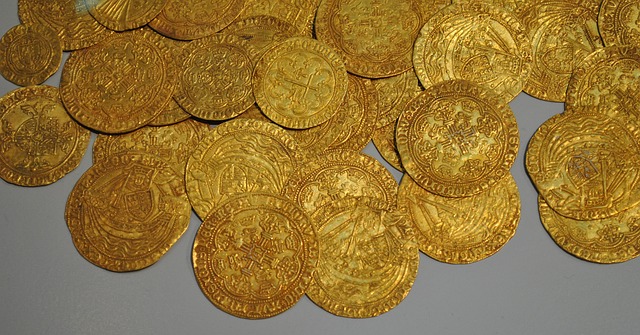Exploring Rare Coins and Their History
Rare coins are special pieces of money that people have used for hundreds of years. This article explains how coins were made, the different types that exist, and how collectors study them to learn about history. Discover how coins can show culture and craftsmanship from long ago.

What Makes Coins Valuable and Rare
Several factors contribute to a coin’s rarity and subsequent value in the numismatic market. Age alone does not determine worth; instead, collectors and experts evaluate coins based on mintage numbers, survival rates, and historical significance. Coins with low original production runs, those that suffered high attrition rates due to melting or loss, and pieces with minting errors often command premium prices.
Condition plays a crucial role in determining value, with professional grading services using standardized scales to assess preservation quality. The most valuable coins typically combine extreme rarity with exceptional condition, creating perfect storms of desirability among collectors. Geographic origin, historical context, and artistic merit also influence a coin’s standing in the marketplace.
Ancient Coins and Early Monetary Systems
The history of coins begins in ancient Lydia, located in modern-day Turkey, around 650 BCE. These early electrum coins marked humanity’s first standardized monetary system, revolutionizing trade and commerce. Ancient Greek city-states quickly adopted coinage, producing some of the most artistically stunning pieces ever created, featuring deities, rulers, and cultural symbols that tell stories of their respective civilizations.
Roman coins evolved from simple bronze pieces to sophisticated gold and silver issues that documented imperial expansion and political changes. These ancient coins provide invaluable insights into historical events, economic policies, and artistic traditions that might otherwise be lost to time. Many ancient coins remain accessible to modern collectors, though the finest examples command substantial premiums.
The Art and Science of Coin Collecting
Modern coin collecting, or numismatics, encompasses various approaches and specializations. Some collectors focus on specific time periods, countries, or denominations, while others pursue complete sets or types. Successful collecting requires knowledge of historical context, grading standards, market trends, and authentication techniques to avoid counterfeits and altered coins.
Proper storage and handling are essential for maintaining coin condition and value. Climate-controlled environments, appropriate holders, and careful handling prevent damage that could significantly impact worth. Many collectors also maintain detailed records of their acquisitions, including purchase prices, grades, and provenance information for insurance and resale purposes.
Historical Development of Coinage Systems
Coinage evolved significantly throughout history, reflecting technological advances and changing economic needs. Medieval European coins often featured religious imagery and royal portraits, establishing traditions that continue today. The discovery of New World silver deposits in the 16th century dramatically increased global coin production and established international trade standards.
The Industrial Revolution brought mechanized minting processes, improving consistency and enabling mass production of coins with intricate designs. Modern security features, including micro-engraving and special alloys, help combat counterfeiting while maintaining the artistic traditions that make coins culturally significant beyond their monetary value.
Understanding Market Values and Investment Potential
The rare coin market operates with significant price variations based on multiple factors. Entry-level ancient coins might cost between $20-100, while museum-quality pieces can reach hundreds of thousands of dollars. American coins show similar ranges, with common date Morgan silver dollars trading for $30-50, while key dates in premium condition exceed $10,000.
| Coin Type | Price Range | Condition Factors | Market Stability |
|---|---|---|---|
| Ancient Bronze Coins | $20-500 | Readable inscriptions, intact details | Stable collector base |
| Medieval Silver | $100-5,000 | Strike quality, surface preservation | Specialized market |
| Early American Copper | $50-2,000 | Color, corrosion levels | Strong domestic demand |
| Gold World Coins | $300-50,000+ | Purity, historical significance | Precious metal correlation |
Prices, rates, or cost estimates mentioned in this article are based on the latest available information but may change over time. Independent research is advised before making financial decisions.
The rare coin market has demonstrated resilience during economic uncertainties, though it requires patience and expertise. Unlike stocks or bonds, coins provide tangible assets with intrinsic historical and metallic value. However, liquidity can be limited for extremely specialized pieces, and market timing affects returns significantly.
Building Knowledge and Expertise in Numismatics
Successful rare coin collecting requires continuous education and market awareness. Professional numismatic organizations offer resources, publications, and networking opportunities for collectors at all levels. Coin shows provide hands-on learning experiences where collectors can examine pieces, meet dealers, and discover new areas of interest.
Authentication services and professional grading have standardized quality assessments, making it easier for collectors to make informed decisions. However, developing personal expertise remains valuable for identifying opportunities and avoiding costly mistakes. Many collectors find that specializing in specific areas allows them to develop deeper knowledge and make more strategic acquisitions.
Rare coins offer a unique combination of historical significance, artistic beauty, and potential financial returns. Whether pursuing ancient artifacts or modern commemoratives, collectors participate in preserving tangible connections to human history while potentially building valuable portfolios. Success in numismatics depends on education, patience, and careful attention to market conditions and coin quality.




